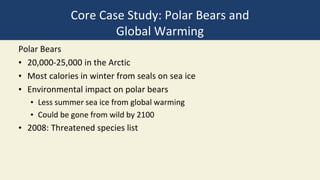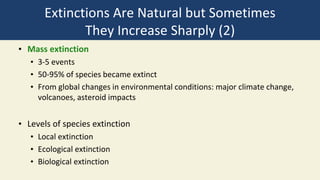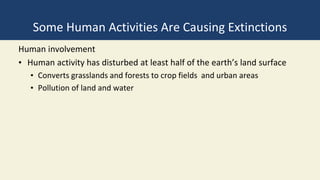Polar bears are threatened by climate change-induced loss of summer sea ice. Their populations have declined, and they could be extinct in the wild by 2100. Current extinction rates are 100-1000 times higher than historical background rates, and are projected to increase to 10,000 times background rates by 2100 due to human activities. Protecting habitats, establishing protected areas, regulating trade and take of threatened species, and addressing climate change can help reduce extinction rates.












































